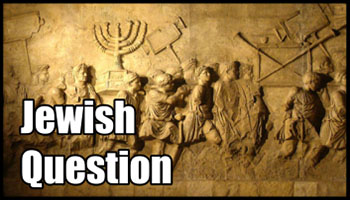Description
The Home of the Indo-Europeans: An Investigation Based on Language and History. By H. H. Bender. Written by a professor of Indo-Germanic Philology in Princeton University, this masterpiece of detective work pieces together evidence from the study of language, geography, history and skeletal archaeology to establish the original homeland of the Indo-European people.
Professor Bender points out that while linguistic relationship is not itself sufficient proof of racial relationship, when combined with archaeological, historical and skeletal evidence, it can provide valuable indicators of common cultural ancestry. His conclusion, after clinically researching the evidence for Asia and Europe, is that the original home of the Indo-Europeans of the “great plain of central and south-eastern Europe, which embraces, roughly, the present Poland, Lithuania, Ukraine, and Russia south and west of the Volga.”
From the introduction: “It was early evident that the speakers of these languages of Europe and Asia were the heirs of a common culture and that their several dialects were the descendants of a prehistoric tongue, the so-called Indo-European, which was not identical with that of the Hebrews, the Babylonians, the Egyptians, or other ancient peoples.
“The Indo-Europeans emerge from the obscurity of antiquity as independent nations, scatted from the arctic circle to the equator and from the Atlantic Ocean to the Bay of Bengal . . . The Celts were not always in Britain, nor the Hellenes in Greece, nor the Hindus in India. They must all have been descended in some way from some localized prehistoric group of people who were united by a common speech and a common civilization.”
New edition, completely reset, with special introduction and index.
Contents
About the Author
Note to the 2018 edition
Foreword
The Indo-Europeans
Language Insufficient Test of Race
Indo-European Civilization
Traditional Home of the Indo-Europeans in Asia
The Duodecimal Argument
Methods of Approaching the Problem
A Land Flowing with . . . Honey
Evidence of Floral and Faunal Names
Evidence of Vocabulary Cumulative rather than Specific
The Fables of the Tortoise and the Eel
The Beech Argument
The Silver Birch Tree
Testimony of Anthropology and Archeology
A Recently Discovered Language
Other Arguments in Behalf of the European Hypothesis
Attempt to Delimit the European Home
Adaptive Radiation
Conservatism of Type at the Center
Conclusion
Bibliography
Index
Illustrations
A Tocharian mummy from western China, unearthed after Professor Bender predicted that they would be an European people
A map of the R1a-M417 Y Chromosome gene’s reach shows the accuracy of Professor Bender’s conclusions
Man on a rope ladder gathering honey from a cleft in the side of a cliff. A prehistoric drawing recently discovered in Spain. (By permission, from The Literary Digest for September 24, 1921.)
Beech Tree photographed circa 1910-1915 by French photographer Eugène Atget (1857-1927)
Silver Birch trees, Finland
The simplest and oldest form of plow. (From Daremberg-Saglio, Dict. des antiq. gr. et rom.)
Rock-carving of the Bronze Age at Tegneby, Bohuslän, Sweden: plow drawn by two oxen under double yoke. The plowman apparently wields a goad. (From Sophus Müller, Charrue, joug et mors.)
A grain-sickle of the Stone Age. The blade is of flint, the shaft of wood. Found in Denmark. (From Aarb. f. nord. Oldk., 1898.)
Shell-heap. (By permission, from Tyler, The New Stone Age in Northern Europe.)
Types of tools and weapons of the Stone Age. Flint saw near the bottom. Originals in Museum für Volkerkunde in Berlin. (From Feist, Kultur, Ausbreitung und Herkunft der Indogermanen.)
Tocharian mummy unearthed in western China.
52 pages. Paperback.



























